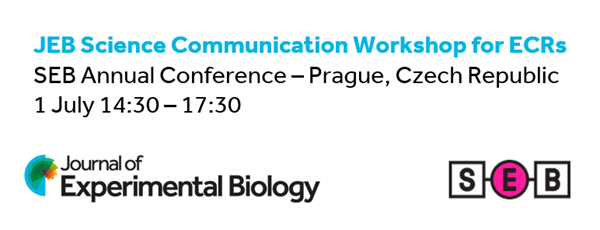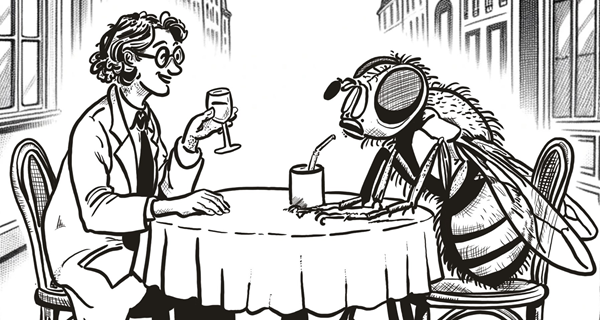Issues
-
Cover image
Cover Image

Cover: Tokay gecko (Gekko gecko) clinging to a tree branch. Garner et al. (jeb241240) examined the substrate use, adhesive performance and vertical clinging behaviour of this gecko in captivity to investigate whether adhesive performance influences patterns of substrate use. Geckos were observed significantly more often on substrates that elicited maximal adhesive performance. Photo credit: Austin M. Garner.
- PDF Icon PDF LinkTable of contents
- PDF Icon PDF LinkIssue info
INSIDE JEB
REVIEW
Stark trade-offs and elegant solutions in arthropod visual systems
Summary: Many elegant eye specializations that evolved in response to visual challenges continue to be discovered in arthropods. This Review summarizes exciting solutions that animals have evolved in response to specific visual challenges.
SHORT COMMUNICATIONS
Tokay geckos (Gekkonidae: Gekko gecko) preferentially use substrates that elicit maximal adhesive performance
Summary: Examination of the relationship between adhesive performance and substrate use in Tokay geckos (Gekko gecko) reveals that geckos use the substrate that elicits maximal adhesive performance significantly more often than its relative availability.
High carbohydrate diet ingestion increases post-meal lipid synthesis and drives respiratory exchange ratios above 1
Summary: Locusts ingesting high carbohydrate diets show a respiratory exchange ratio (RER) above 1 caused by increased CO2 production resulting from increased de novo lipid synthesis.
RESEARCH ARTICLES
Early-life effects of juvenile Western diet and exercise on adult gut microbiome composition in mice
Summary: Selectively bred high runner mice had a unique microbiome and early-life Western diet had a long-lasting effect after a substantial washout period; in contrast, early-life exercise had fewer microbiome effects.
Wing damage affects flight kinematics but not flower tracking performance in hummingbird hawkmoths
Highlighted Article: Hawkmoths compensate for wing damage when tracking flowers in hovering flight: they beat their wings faster and with larger amplitudes, without an impairment in tracking precision.
Different protein metabolic strategies for growth during food-induced physiological plasticity in echinoid larvae
Summary: Analysis of echinoid larvae during food-induced developmental plasticity reveals that larvae growing at different rates utilize distinct protein metabolic strategies to achieve growth, with the most important difference being mass-specific rates of protein degradation.
How hornbills handle heat: sex-specific thermoregulation in the southern yellow-billed hornbill
Editor's choice: In response to increasing air temperature, southern yellow-billed hornbills display sex-specific thermoregulation correlated with sex differences in microclimates during the breeding season
Omega-3 fatty acids accelerate fledging in an avian marine predator: a potential role of cognition
Summary: Supplementing gull chicks with omega-3 fatty acids in the context of natural deficiency improves their cognitive development, as shown by their ability to fledge earlier by escaping a fence encircling their nest.
Tactile active sensing in an insect plant pollinator
Summary: Hawkmoths systematically sweep the surface of artificial flower-like feeders to extract tactile features and learn a more direct strategy to locate the tiny nectary hole at the flower center.
Angling gear avoidance learning in juvenile red sea bream: evidence from individual-based experiments
Summary: Red sea bream demonstrated the quick acquisition and long-term retention of angling avoidance learning, and learned angling gear by identifying the fishing line of the angling gear rather than the angling bait.
Efficient high-voltage protection in the electric catfish
Highlighted Article: Electric catfish are completely immune not only to their own high-voltage electrical shocks but also to external shocks delivered by a commercial electrofishing device.
Breaking free from thermodynamic constraints: thermal acclimation and metabolic compensation in a freshwater zooplankton species
Summary: Warm-acclimated Daphnia magna show metabolic rate compensation at lethally high temperatures, escaping a non-sustainable temperature-imposed constraint, a pattern apparent in changes in respiration, feeding, swimming and, partly, mitochondrial membrane potential.
High spatial resolution mapping of the mucosal proteome of the gills of Crassostrea virginica: implication in particle processing
Summary: Fine-scale proteomic profiles of key functional areas of the oyster gill provide a mechanistic explanation for particle selection process in suspension-feeding bivalves.
Olfactory tracking strategies in a neotropical fruit bat
Summary: Characterization of the olfactory tracking behavior of northern yellow-shouldered bats revealed that the bats can localize an odor reward using klinotaxis and strategic route following, but display fewer head-scanning movements than other mammals.
Transgenic expression of late embryogenesis abundant proteins improves tolerance to water stress in Drosophila melanogaster
Summary: Expression of transgenic late embryogenesis abundant proteins in embryos and third instar larvae of Drosophila melanogaster improves survival after exposure to desiccation and hyperosmotic stress.
Effects of variable oxygen regimes on mitochondrial bioenergetics and reactive oxygen species production in a marine bivalve, Mya arenaria
Summary: Mitochondria of a hypoxia-tolerant bivalve are robust to chronic hypoxia but sensitive to oxygen fluctuations that can impair ATP synthesis efficiency and cause oxidative stress.
Analysis of why sea turtles swim slowly: a metabolic and mechanical approach
Summary: The slow swim speed of sea turtles is regulated by their morphological and physiological features
Acclimation of intestinal morphology and function in Djungarian hamsters (Phodopus sungorus) related to seasonal and acute energy balance
Summary: Anticipated and acute energetic challenges induce acclimation of the Djungarian hamster small intestine. Seasonal body mass-related adjustments sustain long-term energy balance. Food restriction increases glucose uptake and reduces energy consumption by torpor expression.
Effects of early-life exposure to sublethal levels of a common neonicotinoid insecticide on the orientation and migration of monarch butterflies (Danaus plexippus)
Summary: The orientation of migratory monarch butterflies flown in a flight simulator or radio-tracked in the wild was not detectably affected by exposure to field-relevant levels of the neonicotinoid clothianidin during caterpillar development.
CORRECTIONS
2023 JEB Outstanding Paper Prize shortlist and winner

The JEB Editors are delighted to announce the shortlisted authors for the 2023 JEB Outstanding Paper Prize. Read the winning paper - Tiny spies: mosquito antennae are sensitive sensors for eavesdropping on frog calls - by Hoover Pantoja-Sanchez and Brian Leavell from Ximena Bernal's lab at Purdue University, USA.
JEB Science Communication Workshop for ECRs

If you’re an early-career researcher interested in science communication and are attending the SEB Annual Conference in Prague this summer, come a day early and join the JEB Editors at a sci comm workshop to learn the key writing skills needed to promote your research to a broad audience beyond your peers (1 July at 14.30-17.30). Places are limited to 24 attendees, and applicants should apply through the SEB registration page by 30 April 2024.
Bridging the gap between controlled conditions and natural habitats in understanding behaviour

Novel technologies enable behavioural experiments with non-model species, in naturalistic habitats and with underexplored behaviours. In their Commentary, Scholz and colleagues discuss how to obtain a deeper understanding of the natural ecology and lifestyle of study animals.
Beluga metabolic measures could help save species

To help save animals from extinction, it’s important to understand what each species needs to survive. This led Jason John et al. to measure the metabolic rates of captive belugas to develop a ‘fish calculator’ showing that the whales need to eat ~23 salmon per day.
ECR Workshop on Positive Peer Review

Are you an ECR looking for tips on how to write concise, astute and useful manuscript reviews? If so, join the JEB Editors at a 2-hour JEB-sponsored Workshop on Positive Peer Review at the Canadian Society of Zoologists annual meeting in Moncton on 9 May 2024 at 13.00-15.00. There are 25 spaces for ECRs and selection is first come, first serve. To sign up, check the ECR Workshop box when you register for the CSZ meeting.



